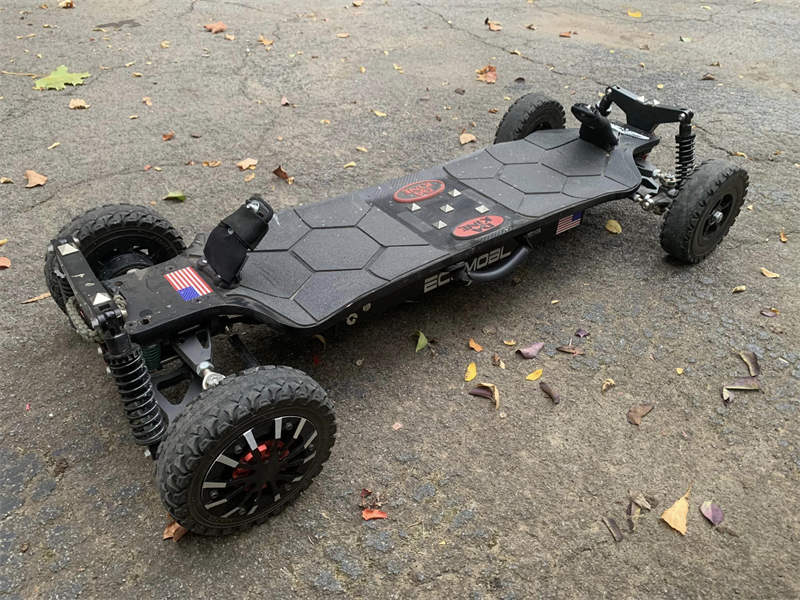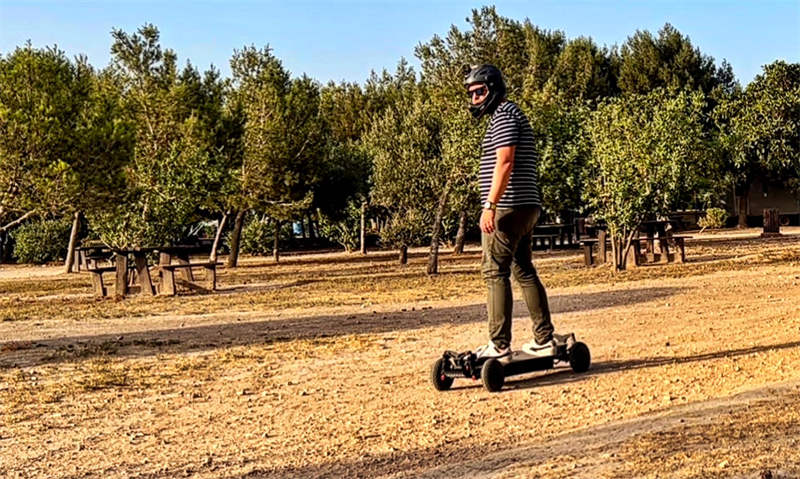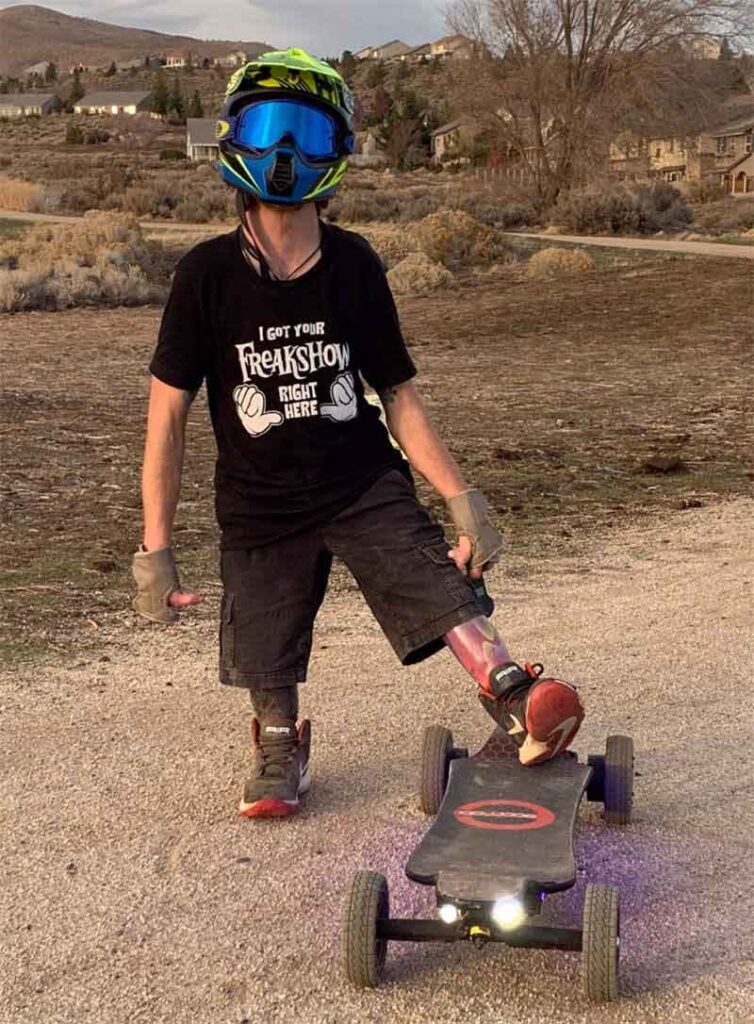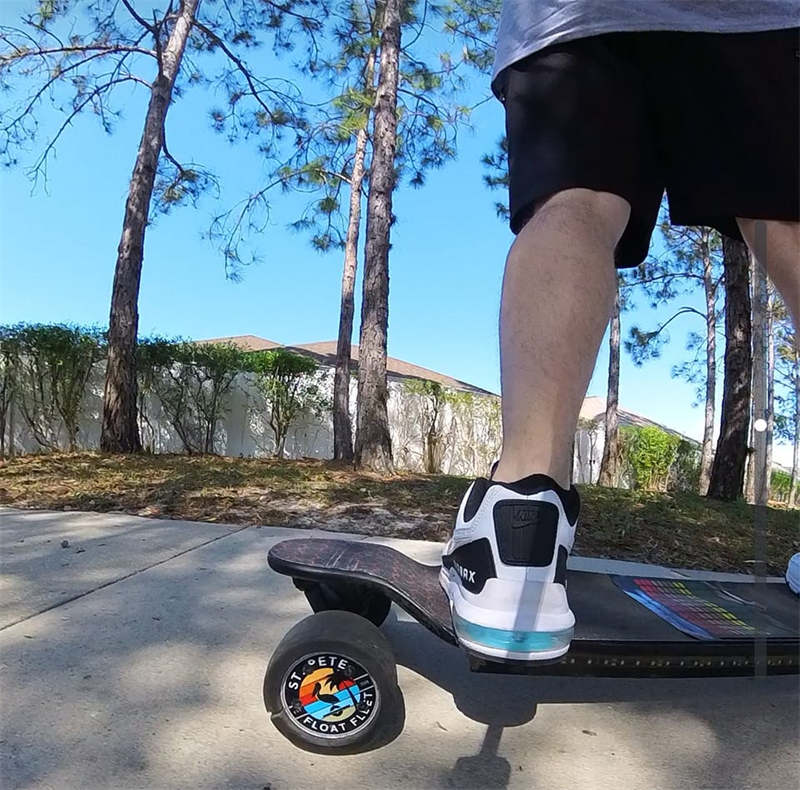
In the world of electric skateboarding, thrills come easy, but so do spills. Whether you’re a newbie just getting the hang of that powered deck or a seasoned rider with the scars to show for it, there’s always a curveball waiting.
By understanding these mistakes and learning how to avoid them, you can have a safe and enjoyable experience. In this article, we will explore the seven most common mistakes that new electric skateboard riders make and, of course, how to dodge them like a pro. Let’s roll!
Electric Skateboarding 101: Dodging Those Newbie Pitfalls
Electric skateboarding is not merely about hopping on the board and zooming off into the sunset. It’s an art and a skill that demands understanding and respect for the ride. New riders, often swayed by the apparent simplicity, tend to overlook the foundational aspects of electric skateboarding, leading to common mistakes that can easily be avoided with a bit of attention and care.
Know Your Ride Inside Out
First things first, that user manual that came with your board? It’s not just a piece of paper. It’s your Bible. Dive into it and understand the controls, features, speed limits, trigger settings, and wheel settings.
The Unseen Power of Modes
Some electric skateboards come equipped with various modes, each designed to cater to different skill levels and provide a tailored riding experience. From beginner modes that limit top speed and acceleration to advanced settings that unleash the full potential of your board, understanding and utilizing these modes is paramount. So, delve into the settings, explore the modes, and choose the one that aligns with your comfort and expertise.
Stance and Balance: The Unsung Heroes
Additionally, it’s crucial to take the time to learn the correct stance and balance on the skateboard. Understanding how to distribute your weight properly can make a significant difference in your overall ride quality and stability. Your feet are your primary control units on an electric skateboard.
A common mistake, especially among beginners, is improper foot positioning (to be discussed in depth later). Avoid placing both feet in the middle of the board. Instead, adopt a stance with legs wide apart, knees slightly bent, and shoulders and back straight, ensuring your eyes are always forward. Your front foot should be closer to the front truck, providing you with enhanced control over your board. While everyone’s foot placement might vary slightly, this is a solid starting point for novices.
Know Your Terrain
Smooth pavements? A dream come true. But rough or uneven surfaces? That’s where things get tricky. Always be on the lookout for potential hazards like potholes or debris. And remember, the terrain dictates the pace. So, adjust your speed and ride with caution.
While electric skateboards can manage small cracks, it’s pivotal to remember those small wheels beneath your deck. They’re not invincible and can be tripped up by obstacles, so it’s often wiser to steer clear, circumventing them to keep your ride smooth and accident-free.
Don’t Push Yourself Too Hard Too Quickly

It’s natural to want to test the speed and capabilities of your electric skateboard, but it’s important to start slow and gradually increase your speed and distance over time.
Rushing can lead to accidents and injuries, especially if you’re not yet comfortable with the controls and handling of your electric skateboard. Now, rushing into things can lead to some nasty accidents and injuries, especially if you’re not yet comfortable with the controls and the handling of your electric skateboard.
So, here’s the deal: First off, start by riding at a slower pace, and find yourself a nice, controlled environment to practice in. Get the hang of turning, braking, and accelerating smoothly. It might not be as thrilling as going full-throttle right away, but it’s essential for building a solid foundation. As you gain confidence and your skills improve, that’s when you can start cranking up the speed and venturing into more challenging terrain. Remember, it’s better to progress steadily and safely rather than risk your safety by trying to do too much too soon.
Not Wearing the Appropriate Safety Gear

When it comes to electric skateboarding, safety should always be a top priority. Many new riders make the mistake of not wearing the appropriate safety gear, which can result in serious injuries. Not wearing the proper safety gear can be a big mistake. While the allure of feeling the wind in your hair and the freedom of the ride is understandable, prioritizing safety should always be the foremost concern.
First things first, invest in some top-notch protective gear. That means a solid helmet, knee pads, elbow pads, and wrist guards. These things are your best friends when it comes to preventing head injuries, fractures, and those nasty abrasions in case you take a spill.
Now, let’s talk about your feet.
The right footwear is crucial. Don’t even think about loose or open-toed shoes – they’re accidents waiting to happen. Instead, go for some sturdy, closed-toe shoes. You want something that’s got a good grip and supports your feet.
Not Knowing How to Turn Properly
Steering an electric skateboard involves controlling its direction of movement while maintaining balance and stability. Here’s a step-by-step guide on how to steer an electric skateboard effectively:
Foot Placement and Stance

Regular Stance: In a regular stance, your left foot is placed at the front of the skateboard, perpendicular to the board’s length, while your right foot is positioned at the back, angled slightly in the same direction.
Goofy Stance: In a goofy stance, it’s the opposite. Your right foot becomes your front foot, positioned perpendicularly to the board, while your left foot is at the back.
Understand Toe-Side and Heel-Side
For Regular Riders:
Toe-Side: This is turning to your right. To initiate a toe-side turn, lean your body weight over your toes and apply some pressure to the edge of the deck. To maintain your center of balance, you can bend your knees slightly as you do this.
Heel-Side: This is turning to your left. To initiate a heel-side turn, lean your body back over your heels and apply pressure to the outside edge of the deck.
For Goofy Riders:
Toe-Side: This is turning to your left. To initiate a toe-side turn, lean your body weight over your toes and apply pressure to the edge of the deck.
Heel-Side: This is turning to your right. To initiate a heel-side turn, lean your body back over your heels and apply pressure to the outside edge of the deck.
Carving
Carving is a fundamental turning technique for electric skateboards, regardless of your stance. It involves making gradual and controlled turns by leaning in the direction you want to go. The amount of lean you apply determines the sharpness of the turn.
For gentler turns, lean less, and for sharper turns, lean more. Finding the right balance of lean is key. Avoid excessive leaning, which can lead to instability and potential falls. Conversely, too little lean may cause your turns to be too shallow. Practice developing a feel for the ideal amount of lean for various turns.
Practice Wide Turns
If you’re new to electric skateboarding, start by practicing wide turns. These are easier to control and provide better stability. As you become more comfortable, you can progress to making tighter turns.
Look Ahead
Keep your gaze fixed on your intended path. Looking in the direction you want to go helps you anticipate and plan your turns effectively. This also enables you to maintain awareness of potential obstacles or hazards.
Experiment with Speed
The speed at which you make a turn impacts its feel and stability. Slower speeds make for tighter, more controlled turns, while higher speeds result in wider, sweeping turns. Experiment with different speeds to get a sense of how your board responds to your inputs.
Combine with the Remote
Many electric skateboards come with a remote control that allows you to control acceleration, braking, and speed settings. Use the remote in conjunction with your body movements to achieve precise and controlled turns. For example, you can use the remote to adjust your speed when entering or exiting turns.
Be Mindful of the Terrain
Different terrains may require adjustments in your steering technique. Be aware of the surface you’re riding on, as rough or uneven terrain can affect your ability to steer smoothly.
Not Knowing How to Brake Properly
Proper braking is a fundamental skill that all electric skateboard riders should master, yet many new riders struggle with this aspect. In panic situations, the instinctual reaction is often to brake abruptly, which can result in a loss of control and falls. Here are some essential points to consider:
Control is Key
When it comes to braking on an electric skateboard, control is everything. Abruptly slamming on the brakes can lead to unwanted consequences, such as skidding or losing control, especially when you’re traveling at higher speeds.
Lean Back Slightly
When you’re braking, it’s a good idea to lean back slightly. This keeps your weight centered over the board and prevents you from unintentionally catapulting yourself over the front.




